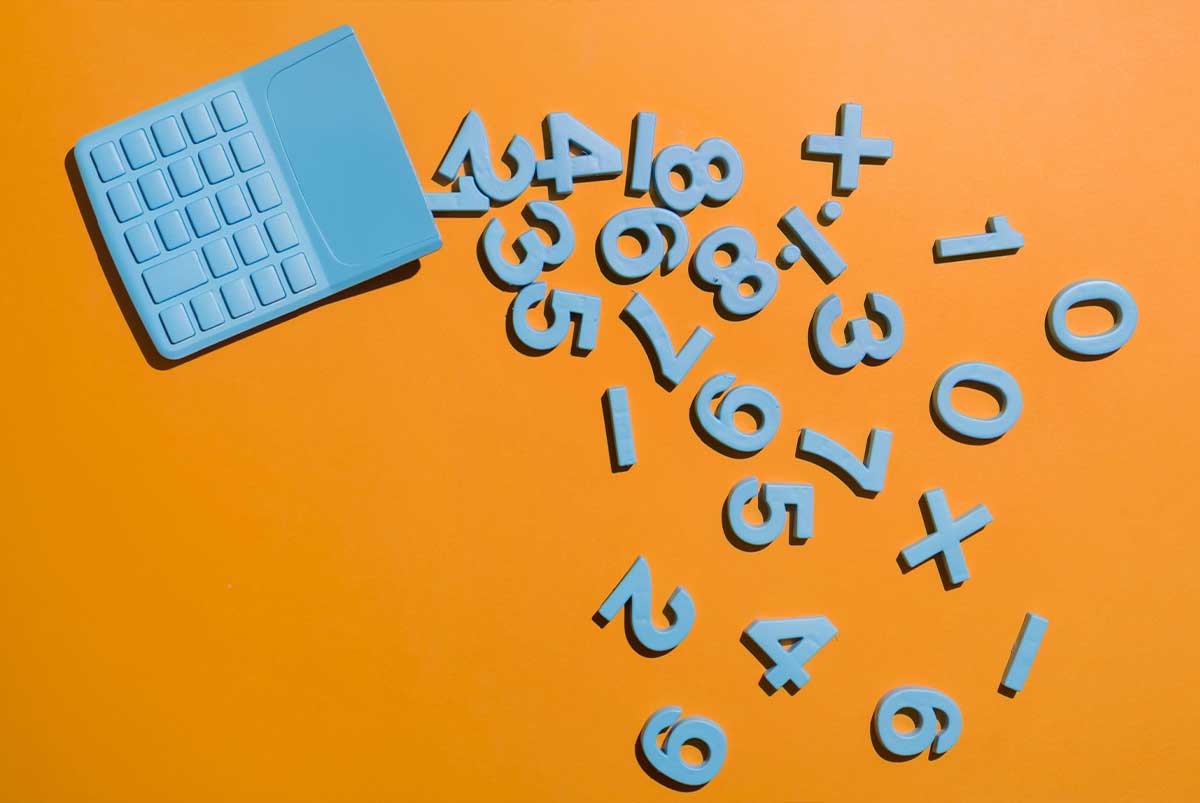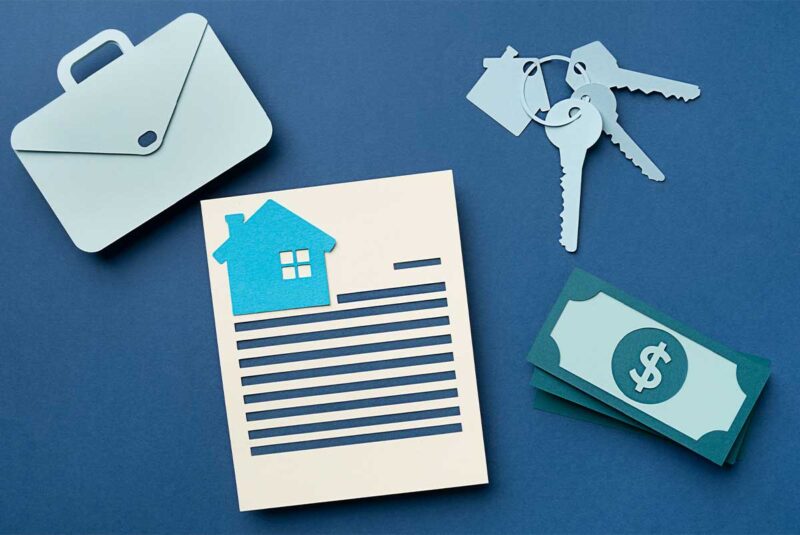Ready To Buy a Home?
Get Approved to Buy a Home
Rocket Mortgage® lets you get to house hunting sooner.
You’ve saved the money, and you’ve found a house. And now it’s finally happening for you. As part of the exciting process of buying your first home, you apply to the bank for mortgage preapproval.
While evaluating your request, the lender tells you they need to figure out if you can afford the monthly costs of homeownership. Then, you hear a term you may not be familiar with: PITI.
We’ll explain what the acronym stands for, how to calculate it and why it matters below.
What Does PITI Stand For?
PITI stands for principal, interest, taxes and insurance. It makes up your total monthly mortgage payment and helps determine if you qualify for a loan. Taxes and insurance will vary based on the property and your credit history, which can impact your potential monthly payment.
PITI is a big deal, especially if you’re a first-time home buyer. These combined costs can affect whether you’re approved for a mortgage. If the total PITI figure is too high, you may have to rethink how much home you can afford.
Understanding PITI
PITI includes the combined costs a lender uses to calculate your expected mortgage payment. The total is an important figure, since your lender uses it to determine your ability to repay the loan.
Conventional mortgage lenders typically aim for a PITI that’s no more than 25% – 28% of your monthly income.[1] For example, if your income is $5,000 a month, 28% of that would be $1,400. If your proposed home mortgage has a PITI at or below $1,400, your income may be enough to qualify you for the loan.
If it’s a bit higher, say $1,450 or $1,500 a month, you still might be able to get financing. However, it may require a higher down payment or a longer repayment schedule.
When the math works out and the PITI calculation shows the mortgage payment is within your means, you’re more attractive as a borrower. A lower-than-expected PITI might get you a lower interest rate or increase the size of the loan you qualify for.
Here’s a breakdown of the four PITI components lenders look at:
Principal
The principal is the amount of money you borrow to buy a house. It’s the price you pay for the home, minus your down payment. This is by far the largest single component of a mortgage loan, and it has the biggest impact on how much house you can afford.
Interest
Interest is the amount of money the lender charges you for a loan. When you borrow money to buy a home, the lender fronts you the cash right away, which is then given to the seller. You’re expected to pay back the principal, plus interest, every month over a certain number of years.
The interest rate you pay is based on various factors, such as the type of mortgage you apply for, the length of the loan and your credit score. The state of the economy and real estate market can also affect current mortgage interest rates.
Taxes
As the new homeowner, you’re responsible for paying property taxes through your county or local municipality. Many borrowers pay their taxes as part of their monthly mortgage payment, and sometimes it’s required – like with Federal Housing Administration (FHA) loans.
Lenders include taxes in the PITI calculation, so they know borrowers have enough income to cover this cost. This is important because not paying property taxes can result in a tax lien on the property or foreclosure.
Insurance
When you buy a house, you’ll want to get a homeowners insurance policy to protect the property against fire, lightning storms, break-ins and other events. Plus, your mortgage lender may insist you carry a certain level of coverage.
Besides homeowners insurance, if you put less than 20% down, you’ll likely have to pay monthly mortgage insurance. This type of insurance protects the lender in case you default on the loan.
Your lender will likely include the cost of homeowners insurance and mortgage insurance in their PITI calculation, so they know you have sufficient income to make the payments.
Get approved to buy a home.
Rocket Mortgage® lets you get to house hunting sooner.
How Do You Calculate Your PITI Payment?
The formula that’s used to calculate PITI isn’t too complicated.
PITI = principal payment + interest payment + tax payment + insurance payment
This is the dollar amount your lender determines you’ll have to pay each month to stay current on a mortgage loan.
Let’s say you found an amazing home with an ocean view and lots of space in the backyard. If the owner is asking $400,000 for the property, here’s how to calculate the PITI:
Principal + Interest (PI)
You’ve agreed to pay $400,000 for your dream home and make a 10% (or $40,000) down payment. The principal amount of your mortgage would be $360,000.
Let’s say you get a fixed-rate 30-year mortgage with a 4% interest rate. Your lender will amortize your payments – you can see how this works using a mortgage calculator – so you pay the same amount to cover the principal and interest every month for the 360 payments you’ll make over the life of the loan.
In this example, you’d have a combined principal and interest payment of $1,719 a month.
PI = $1,719
However, the amount you’ll pay toward principal and interest will change over time.
When you make your first mortgage payment, $519 will go toward the principal and $1,200 will go toward interest. Every month after that, you’ll pay a little more toward the principal. At your 152nd payment (12 years into the mortgage), your principal payment will be more than your interest payment.
Taxes
Property taxes vary depending on where you live, and you may need to pay a combination of state, city and local property taxes. At the state level, property taxes for homes with a mortgage can range from a median of $705 in Alabama to more than $8,553 in New Jersey.[2]
To find out what your monthly tax bill might be, divide the home’s value by 1,000 and multiply that by your local property tax rate. Assuming your rate is somewhere in the middle, around 1%, that would be $4,000 a year. Divide that by 12, and you get $333 in monthly property taxes.
PIT = $1,719 + $333 = $2,052
Insurance
Two types of home insurance are included in your PITI: homeowners insurance and mortgage insurance – if you put less than 20% down.
Homeowners insurance
Homeowners insurance can vary depending on where you live, the type of home you own and the level of coverage you get.
According to one study, the average cost of homeowners insurance is around $1,272. For our $400,000 home example, let’s assume it’s a little higher, at around $1,500.[3] Divide this by 12 to get your monthly insurance premium of $125 a month.
Mortgage insurance
For a conventional mortgage – which isn’t backed by the government – expect to pay between $30 and $70 a month in private mortgage insurance (PMI) for every $100,000 borrowed.[4] For our $360,000 mortgage, let’s assume $50 per month times 3.6 for a total of $180 per month in PMI.
PITI = $2,052 + $125 + $180 = $2,357
Why Does PITI Matter for Real Estate and Home Buying?
PITI has a significant impact on how much money you can expect to borrow for a mortgage. This, in turn, affects how much house you can buy, the kind of terms you get and your down payment requirement.
Lenders don’t only use the PITI figure to determine how much income you’ll need to afford a given loan amount. They also use it to calculate your debt-to-income (DTI) ratio, which is a key factor in whether you get approved for a mortgage.
Lenders prefer a PITI that’s at or below 25% – 28% of a borrower’s monthly income. You’d need a monthly income of about $8,400 to pay the $2,357 principal, interest, taxes and insurance on your $400,000 ocean-view home.
What’s not included in PITI
It’s important to remember that PITI isn’t the total cost of buying and maintaining a home. You may have to pay for home repairs. There’s also the down payment and closing costs, which can include:
- A home inspection
- An appraisal
- Real estate attorney fees
- Title transfer costs
When you’re deciding if a particular home is the right investment, be sure to consider all of its potential costs.
PITI FAQs
PITI is important because it represents your total monthly mortgage payment. Understanding what your PITI looks like helps you determine how much home you can afford.
For a conventional mortgage, lenders prefer a PITI that’s less than 25% – 28% of your monthly income.
To follow this rule, don’t spend more than 28% of your monthly income on your mortgage and no more than 36% of your income on your total debt – think mortgage, plus student loans, car payment and so on. The goal of this rule is to keep you from becoming
PITI refers to the components of your mortgage payment, including principal, interest, taxes and insurance. Private mortgage insurance (PMI) is a component of PITI, but only required if you put less than 20% down on the property.
Understanding Your Mortgage Payments To Better Prepare
The more you understand about how a mortgage works, the better prepared you’ll be for the home buying process.Understanding the way your mortgage payment is calculated, and the effect it’ll likely have on your approval for a loan, can help you look for a home and mortgage that meet your needs and budget. Need more help? Using a mortgage calculator can help you check your numbers to see what kind of PITI you can expect on your new home.
The Short Version
- PITI stands for principal, interest, taxes and insurance
- To calculate PITI, add up your monthly principal payment, interest payment, tax payment and insurance payment on your mortgage
- PITI helps determine if you qualify for a mortgage loan by comparing your income to your monthly payment to find out what you can afford
Federal Deposit Insurance Corporation. “How Much Mortgage Can I Afford?” Retrieved February 2023 from https://www.fdic.gov/consumers/consumer/moneysmart/podcast/documents/borrowing-money-how-much-mortgage-can-i-afford.pdf
U.S. Census Bureau. “B25103 MORTGAGE STATUS BY MEDIAN REAL ESTATE TAXES PAID (DOLLARS).” Retrieved February 2023 fromhttps://data.census.gov/cedsci/table?t%3DReal%2520Estate%2520Taxes%26g%3D0100000US%25240400000%26tid%3DACSDT1Y2019.B25103%26tp%3Dtrue&sa=D&source=docs&ust=1643212147454061&usg=AOvVaw01ygv9pjs7yOH_Zw_8rq5H
Insurance Information Institute. “Facts + Statistics: Homeowners and renters insurance.” Retrieved February 2023 https://www.iii.org/fact-statistic/facts-statistics-homeowners-and-renters-insurance#Expenditures%20for%20homeowners%20and%20renters%20insurance
Freddie Mac. “Breaking Down PMI.” Retrieved February 2023 from https://myhome.freddiemac.com/buying/breaking-down-pmi




